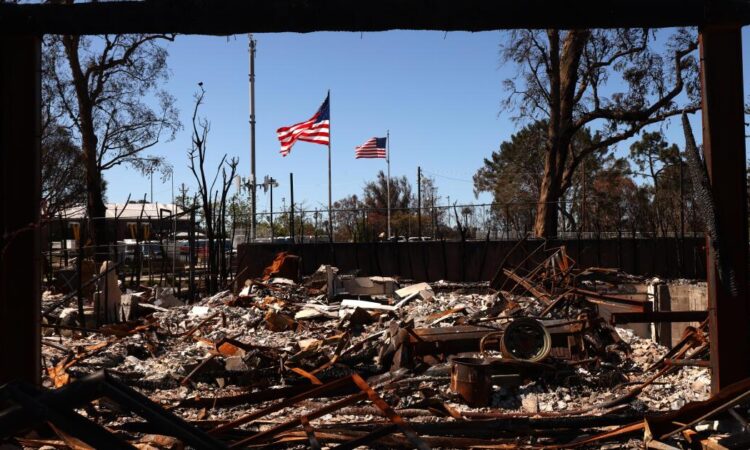
Stand Insurance has raised $35 million in a Series B funding round to expand its artificial intelligence-powered coverage for homeowners.
The company targets insurance markets deemed risky, with policies covering properties valued at a total of $1 billion in wildfire-prone California. The company says it will use the fresh funding to expand into Florida this year, another market with a huge protection gap because of its hurricane exposure.
Stand’s latest fundraising round was led by Eclipse, a California-based investment firm that manages more than $5 billion in assets. The startup also counts Lowercarbon Capital and Inspired Capital among its backers.
Climate change is upending the global insurance industry by driving more extreme events. This year’s Los Angeles wildfire alone caused an estimated $164 billion in losses, and insurance companies are increasingly pulling out of risk-prone areas.
San Francisco-based Stand uses remote sensing data and collects details from homeowners such as materials used for windows and the tree species in the backyard. The startup analyzes this information using artificial intelligence technology, which it uses to simulate how wind, heat, embers and other factors stand to contribute to possible damage.
“That basically tells us what are the vulnerabilities that you need to remedy,” said Dan Preston, Stand’s cofounder and chief executive officer. The result, he said, is a tailor-made action plan to mitigate their risks. Homeowners who follow Stand’s guidance will be eligible for its insurance with discounts.
Worldwide, the insurance tech industry has attracted more than $60 billion in investment since 2012, about a quarter of which went to AI-related startups, according to a report published in August by Gallagher Re and CB Insights. Large insurers are also turning to AI to help assess risk. Stand’s insurance service is profitable, according to Preston, though he declined to share specifics.
But while interest in the technology is growing, there are potential pitfalls to relying on AI. Models tend to be black boxes, and they can come up with wildly different projections. That makes it challenging to vet their accuracy and could leave homeowners with little recourse should claims be denied or rates changed.
AI models “tend to do better when you’re looking at aggregated losses, not the loss for one specific house,” said Rachel Davidson, professor of civil and environmental engineering at the University of Delaware.
In neighborhoods where homes are built right next to each other, making one property resilient alone isn’t enough to reduce the risk. Operating in markets with fewer carriers could also be costly for Stand should disaster strike.
“There is a risk that these AI-driven insurance startups enter a market where traditional insurers have exited, and people become more and more reliant on a concentrated array of insurers,” said Jesse Keenan, associate professor of sustainable real estate and urban planning at Tulane University in New Orleans and author of “North: The Future of Post-Climate America.” Among the issues is that insurers will face inordinate exposure, “and this could result in their inability to pay claims.”
California’s state-backed FAIR Plan also provides insurance to homeowners who fail to obtain a regular policy. Stand focuses on homes valued at $2 million and $10 million, a market segment that the startup says lacks sufficient protection, as the FAIR Plan caps coverage at $3 million.
Coverage for a $5-million home in Pacific Palisades, which was at the epicenter of the Los Angeles fires, could cost $35,000 in annual premiums with Stand, Preston said. The average premium for a non-admitted carrier — a more lightly regulated type of insurance — to protect property in the same area this year was roughly $46,000, while a number of insurers have stopped renewing some policies altogether.
“If tech can do a better job of distinguishing riskier homes from safer homes and offer differentiated premiums accordingly, it can offer pricing that is more fair and has the potential to encourage homeowners to adopt more risk mitigation,” said Shan Ge, assistant professor at New York University’s Stern School of Business.
Liu and Kishan write for Bloomberg.




